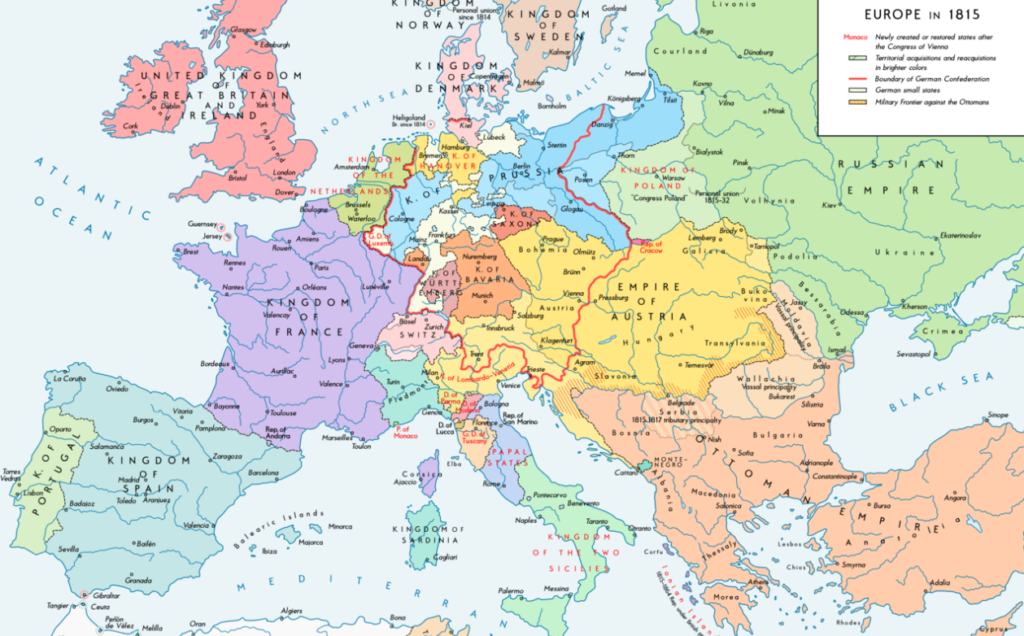
The Congress of Vienna, held from September 1814 to June 1815, was a major diplomatic event aimed at restoring stability and order to Europe after the Napoleonic Wars. It was attended by the major powers of the time, including Austria, Prussia, Russia, and the United Kingdom, with France also participating but in a reduced role.
One of the Congress’s main objectives was to redraw the map of Europe and establish new boundaries that would prevent the rise of another hegemonic power like Napoleon’s France. Here are the key territorial changes and boundaries that were set:
1. France
- France was reduced to its 1792 borders, which were considerably smaller than during Napoleon’s conquests. France lost all its gains from the Napoleonic Wars, including territories like Belgium and parts of Italy and Germany.
- The Kingdom of France was restored under Louis XVIII, and the monarchy was re-established, but France was also surrounded by stronger neighbors to prevent any future expansionist ambitions.
2. Austria
- Austria gained control of several territories in Italy (such as Lombardy and Venetia) and southern Germany.
- The Austrian Empire also gained territories in the Balkans, including parts of modern-day Croatia and Serbia, enhancing its influence in Eastern Europe.
3. Prussia
- Prussia’s borders expanded significantly. It received much of the Kingdom of Saxony (with the exception of some parts) and territories in western Germany.
- Prussia also gained parts of Poland (Congress Poland), solidifying its position as a dominant German state. The Kingdom of Prussia thus became the most powerful state in Germany.
4. Russia
- Russia was granted most of the Duchy of Warsaw (a French client state), which became Congress Poland, creating a large Russian-controlled area to the west of its borders.
- Russia also gained influence over Finland, which had been ceded from Sweden in 1809.
5. United Kingdom
- The UK did not gain much land directly but expanded its influence globally. It secured strategic colonial holdings, such as the Cape Colony in South Africa, Mauritius, and parts of the Caribbean, as well as naval dominance.
- The UK also received the island of Malta from France and a few other territories to reinforce its global empire.
6. Other Changes
- The German Confederation was created, a loose association of 39 German states, largely dominated by Austria and Prussia, replacing the Holy Roman Empire which had been dissolved after Napoleon’s defeat.
- The Kingdom of the Netherlands was established, combining the former Austrian Netherlands (modern Belgium) and the Netherlands.
- Switzerland was confirmed as a neutral state, with its borders expanded to include parts of Italy and Germany.
- Norway was ceded from Denmark to Sweden, after Denmark had been forced to cede Norway in exchange for retaining its possession of Iceland and Greenland.
7. Balance of Power Principle
- Beyond specific territorial settlements, one of the Congress’s primary goals was to restore the balance of power in Europe. The idea was that no single nation would dominate the continent as France had under Napoleon. This principle was meant to maintain peace by preventing one nation from becoming too powerful.
The Congress of Vienna had lasting effects on European politics, establishing borders that lasted for several decades. However, many of the decisions made at the Congress contributed to tensions that would later explode in conflicts like the revolutions of 1848 and, ultimately, the outbreak of World War I.